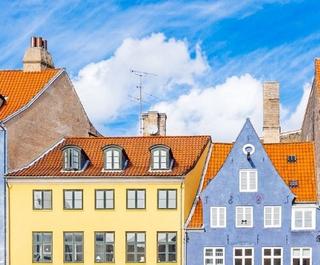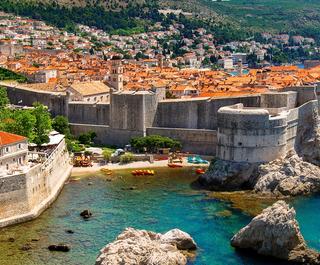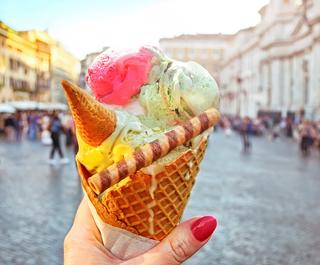
Take a tour through any of Venice’s winding streets or waterways and you’ll note grand palazzos, opulent churches and ancient buildings. The city has a rich and diverse architectural style with Byzantine and Ottoman influences dating back centuries, the most famous of which feature a blend of grand Renaissance and Gothic construction.
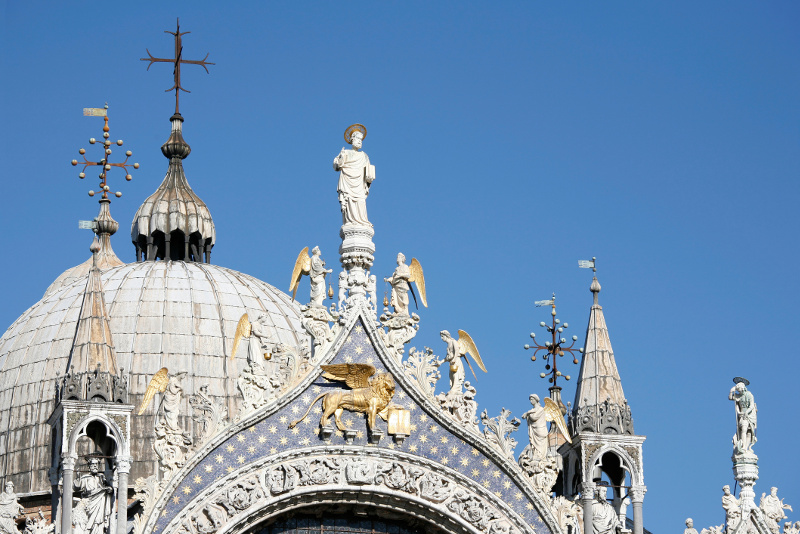 Relish in the Byzantium design of this incredible building, complete with ancient sculptures
Relish in the Byzantium design of this incredible building, complete with ancient sculpturesBasilica di San Marco
One of the most famous highlights of Venice, this grand cathedral church features an opulent Byzantium design with ancient sculptures, more than 8000 metres of striking golden mosaics, a Greek cross layout and walls clad in marble from Syria, Egypt and Palestine. With a history dating back to 829, the additions of sculpture, mosaics and ceremonial objects over centuries have increased the church’s magnificence.
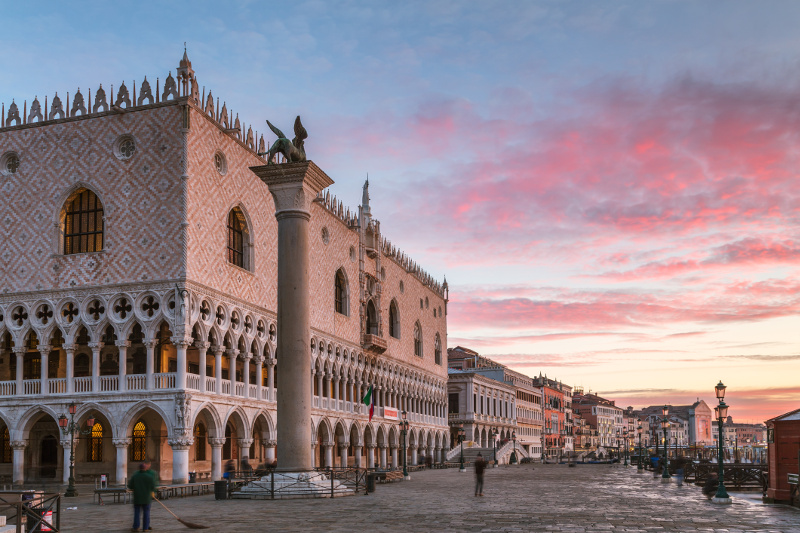 This Gothic building houses beautiful medieval facades, statues and original furnishings
This Gothic building houses beautiful medieval facades, statues and original furnishingsDoge’s Palace
The Palazzo Ducale, or Doge’s Palace, was the official seat of the Venetian government for centuries. It also housed the Doge’s apartments, the city’s law courts and the prison, until its relocation across the Bridge of Sighs. Inside the imposing Gothic structure you’ll find medieval facades, statues, courtyards and original furnishings.
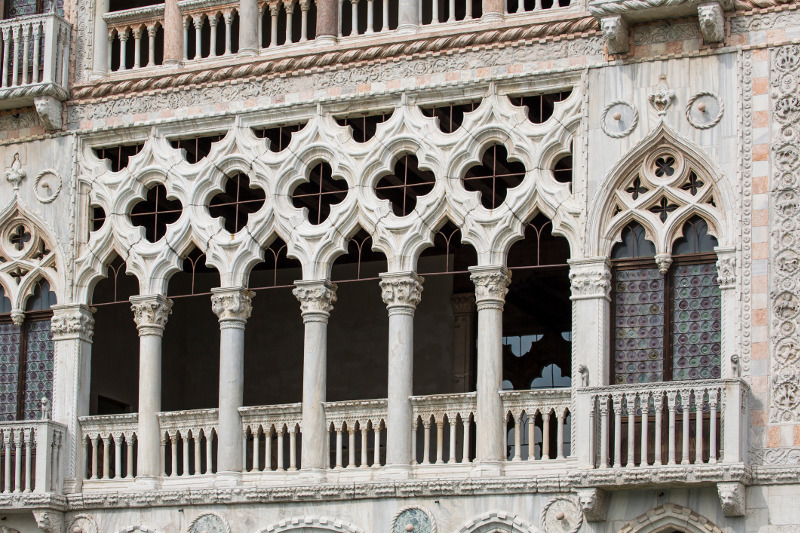 Also known as the Golden House, this building features incredible gold leafed detail across its exterior
Also known as the Golden House, this building features incredible gold leafed detail across its exteriorCa’ d’Oro
Named ‘Golden House’ for the elaborate gold-leafed detail once featured in its exterior, this 15th century palace sits alongside the Grand Canal with an ornate Gothic facade. Filled with priceless Renaissance art, sculpture, bronze reliefs and artefacts, the building was commissioned in 1420 by wealthy patrician Marino Contarini to be the city’s most magnificent palace and entrusted to a team of Venetian and Lombard craftsmen.
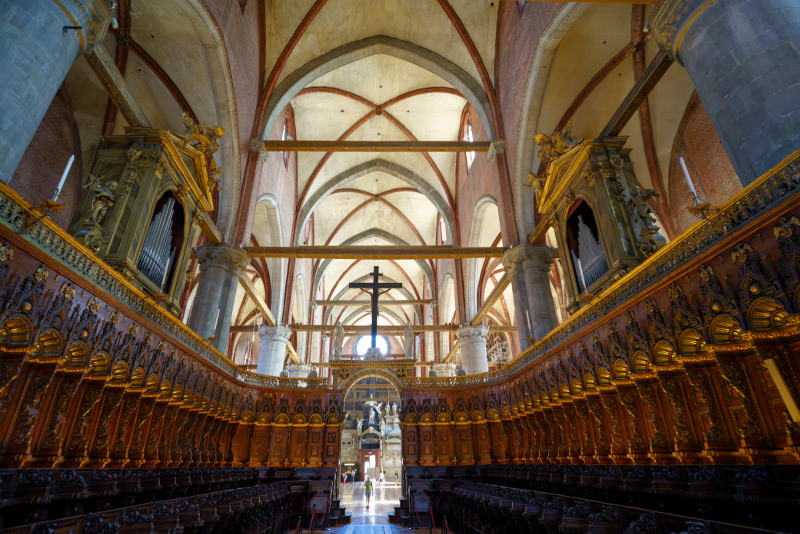 Modest on the outside, the interiors of this church are amazingly beautiful
Modest on the outside, the interiors of this church are amazingly beautifulSanta Maria Gloriosa dei Frari
Commonly known as the Frari, this vast Gothic church stands on the Campo dei Frari in the heart of the San Polo district. Its exterior is intentionally simplistic in accordance with its Franciscan heritage; however, the interior boasts impressive works of art including masterpieces by Titian and Giovanni Bellini. There is also a Monks’ choir consisting of three-tiered stalls, the Tomb of Canova and a rood screen with decorative marble figures.
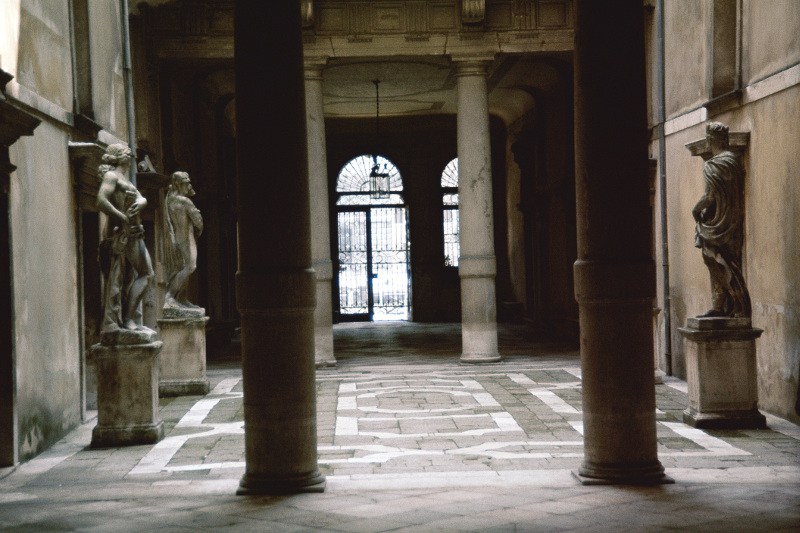 This building plays home to the Museum of 18th Century Venice, complete with Baroque architecture by architect Baldassare Longhena
This building plays home to the Museum of 18th Century Venice, complete with Baroque architecture by architect Baldassare LonghenaCa’ Rezzonico
Housing the Museum of 18th century Venice, this striking palace was designed by the master Baroque architect Baldassare Longhena for the aristocratic Bon family. Inside, a marble staircase leads to gilded ballrooms, frescoed salons and ornate boudoirs, while the art collection includes paintings, sculptures and 18th century furnishings. Not to be missed are two early works by Canaletto; and the Mestrovich Collection, containing works by artists such as Jacopo Tintoretto and Bonifacio de’ Pitati.
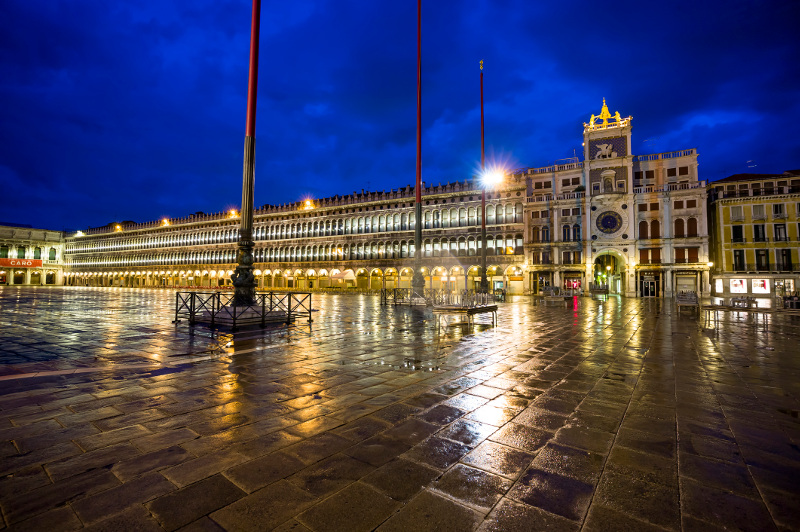 The clock face is one of the highlights of this building, with its striking blue enamel and detailed symbols
The clock face is one of the highlights of this building, with its striking blue enamel and detailed symbolsTorre dell'Orologio
One of the most famous architectural landmarks in Venice, St Mark’s Clock Tower, as it’s also known, is a Renaissance building dating back to the 15th century. As well as functioning as an elaborate timepiece and central point of focus for the city, the gilt and blue enamel clock face displays phases of the moon and signs of the zodiac – designed with seafarers in mind.
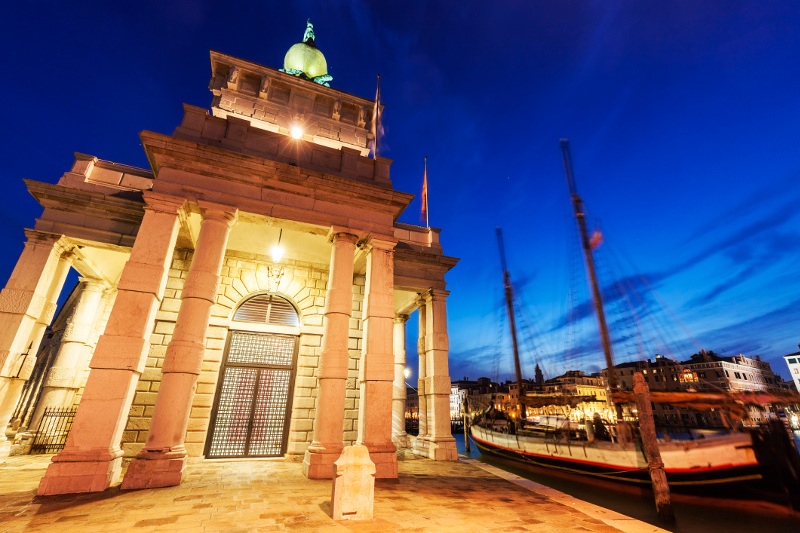 This interesting building was once used for docking and customs
This interesting building was once used for docking and customsPunta Della Dogana
Built by Giuseppe Benoni in 1677 with completion in 1682 to ensure no ship entered the Grand Canal without paying duties, it sits at the intersection of the Grand and Giudecca Canals and features a striking triangular point once used for docking and customs. The building was restored by minimalist Japanese architect Tadao Ando in 2009 and now houses a rotating exhibition of contemporary art.
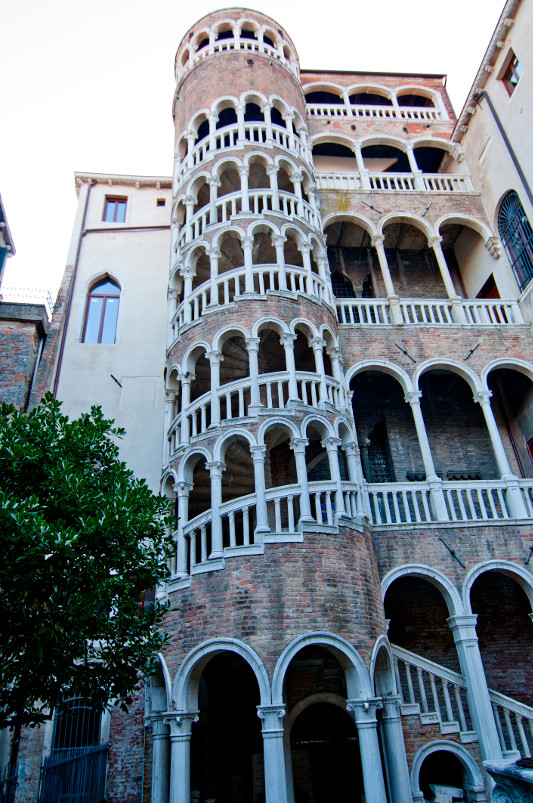 One of the city's most famous buildings, this must-see is home to the 'snail staircase'
One of the city's most famous buildings, this must-see is home to the 'snail staircase' Scala Contarini del Bovolo
Hidden within Venice’s labyrinth lies the so-called ‘Snail Staircase’, a stunning architectural example of Renaissance, Gothic and Venetian-Byzantine styles. It was commissioned by Pietro Contari around the end of the 1400s to decorate the facade of Palace San Paterniano, which was owned by an illustrious Venetian family. The spiral staircase features large Renaissance arches and is 26 metres high, with the top floor lookout boasting decorative Istrian stone and elevated Venetian views.
 This beautifully ornate building is home to the National Library of St Mark
This beautifully ornate building is home to the National Library of St MarkBiblioteca Nazionale Marciana
Designed by Jacopo Sansovini in the 16th century, this Renaissance palace is home to the National Library of St Mark. Featuring an arcade of Doric columns, Ionic columns and a series of statues of heroes and gods on the roof, the building is finely decorated and contains contributions from Venetian greats Titian, Paolo Veronese, Alessandro Vittoria and Tintoretto.
Peggy Guggenheim Museum
Palazzo Venier dei Leoni is a striking 18th century unfinished palace residing along the Grand Canal that was once home to American heiress Peggy Guggenheim. One of the great patrons of the arts, she devoted her life to collecting precious works of art and the palace houses pieces by Dali, Picasso and Kandinksy alongside lesser-known artists. The building itself features a magnificent classical facade, made of Istrian stone and framed by lush gardens.


